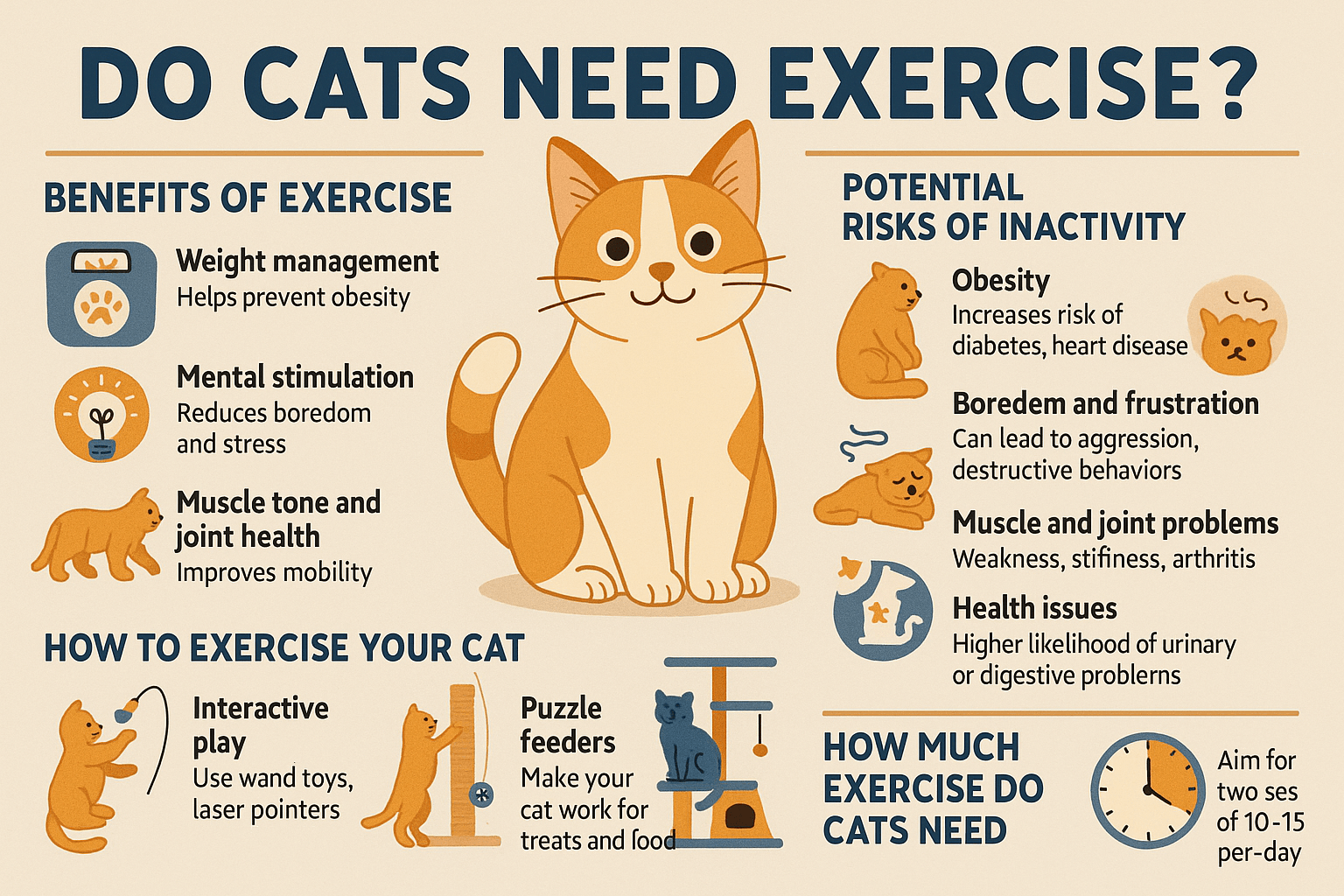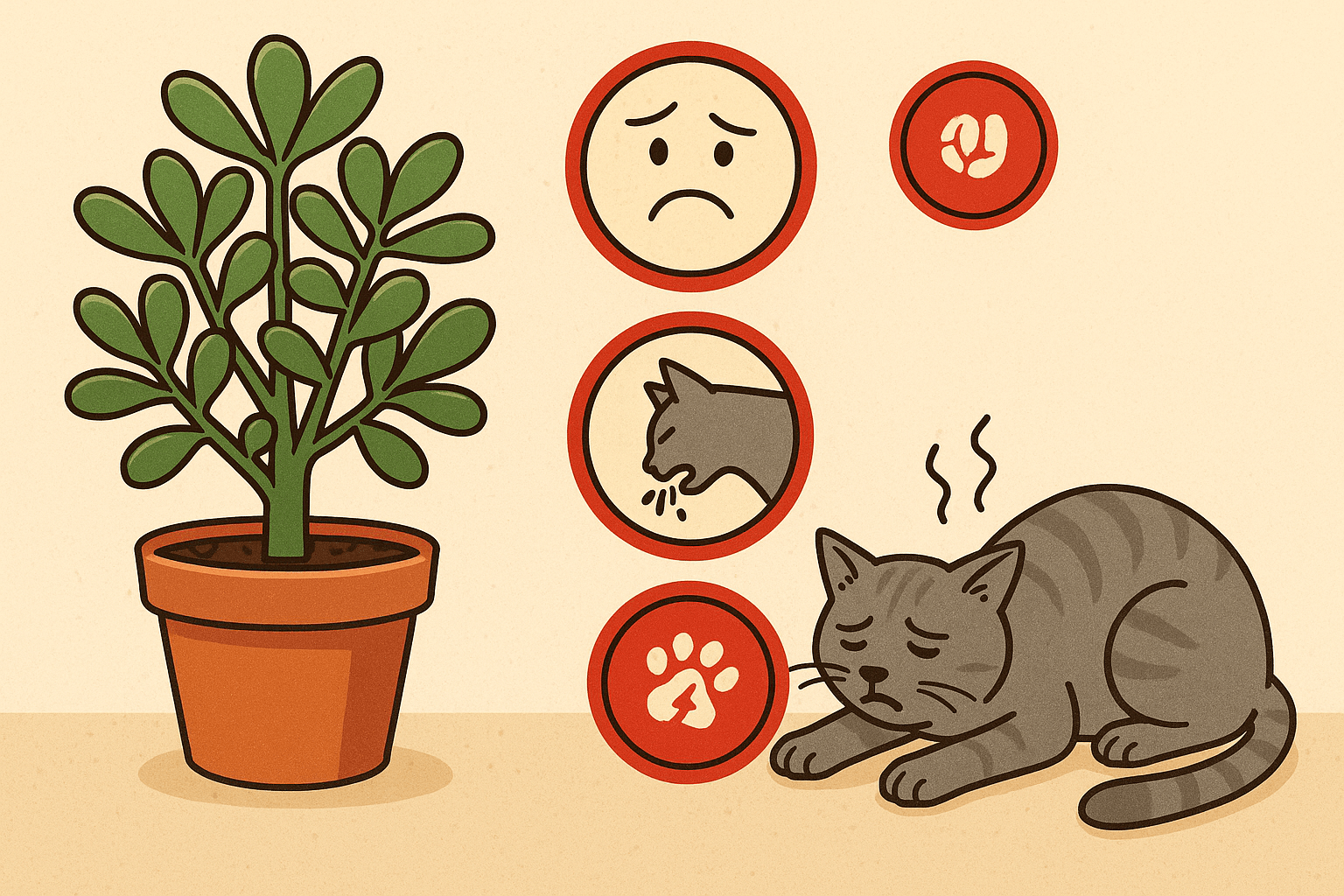Do Cats Need Exercise?
When we think of exercise, dogs often come to mind—running in the park, playing fetch, or going for long walks. But what about cats? Many people assume that cats are naturally self-sufficient when it comes to staying active, but the truth is that cats need exercise too. While they may not require the same level of physical activity as dogs, regular movement is essential for their physical health, mental well-being, and overall happiness.
Whether you’re a new cat owner or have shared your home with felines for years, understanding the importance of exercise for your cat can help you create a balanced routine that keeps them fit and engaged. Let’s dive into why exercise matters for cats and how you can encourage them to stay active.
Why Exercise Is Crucial for Cats
Exercise isn’t just for humans or dogs—it plays a vital role in keeping cats healthy and happy. From maintaining a healthy weight to preventing boredom, here’s why regular activity is so important for your feline friend.
Prevents Obesity:
Lack of exercise can lead to weight gain, which increases the risk of diabetes, joint problems, and other health issues.Improves Mental Health:
Physical activity stimulates your cat’s mind, reducing stress, anxiety, and destructive behaviors like excessive scratching or chewing.Enhances Muscle Tone and Flexibility:
Regular movement helps maintain strong muscles and flexibility, especially important as cats age.Supports Natural Instincts:
Cats are natural hunters and climbers. Exercise allows them to engage in instinctual behaviors like stalking, pouncing, and leaping.Strengthens Your Bond:
Interactive playtime strengthens the connection between you and your cat, fostering trust and companionship.
By prioritizing exercise, you’re not only improving your cat’s physical health but also enriching their quality of life.

How Much Exercise Do Cats Need?
The amount of exercise your cat requires depends on factors like age, breed, and personality. However, there are general guidelines to ensure they stay active and healthy.
Kittens (Under 1 Year):
Kittens are bundles of energy and benefit from multiple short play sessions throughout the day, lasting 5-10 minutes each.Adult Cats (1-7 Years):
Adult cats need at least 20-30 minutes of exercise daily, split into two or more sessions to keep them engaged.Senior Cats (7+ Years):
Older cats may tire more easily, but gentle activities like slow chasing games or climbing low surfaces are still important.Indoor vs. Outdoor Cats:
Indoor cats rely entirely on their owners for structured exercise, while outdoor cats often get additional activity through exploration.Breed-Specific Needs:
High-energy breeds like Bengals or Abyssinians require more vigorous play compared to laid-back breeds like Persians.
Understanding these factors ensures you tailor an exercise plan that suits your cat’s unique needs.
Check this guide 👉Why Doesnt My Cat Play with Toys? Best 7 Tips!
Check this guide 👉Top 5 Must-Have Cat Playpens for Ultimate Feline Fun!
Check this guide 👉Top 5 Must-Have Cat Playpens for Ultimate Feline Fun!
Benefits of Cat Exercise | Fun Ways to Encourage Movement |
|---|---|
Prevents obesity and related diseases | Use feather wands for interactive play |
Reduces stress and boredom | Set up a cat tower for climbing |
Supports muscle strength and agility | Hide treats for a scavenger hunt |
Stimulates natural hunting instincts | Introduce laser pointers for chasing |
Strengthens bond with your cat | Play tug-of-war with safe toys |
Signs Your Cat Isn’t Getting Enough Exercise
If your cat isn’t engaging in enough physical activity, it can manifest in various behavioral and health-related signs. Recognizing these indicators can help you address the issue promptly.
Excessive Sleeping:
While cats sleep a lot, sleeping nearly all day could indicate a lack of stimulation or physical activity.Weight Gain:
A noticeable increase in your cat’s weight may suggest they’re not burning enough calories through exercise.Destructive Behavior:
Cats who aren’t exercised enough may resort to scratching furniture, knocking over objects, or chewing inappropriate items.Lethargy or Low Energy:
If your cat seems disinterested in play or movement, it might be due to insufficient exercise.Overgrooming or Anxiety:
Boredom or stress caused by inactivity can lead to obsessive grooming or other anxious behaviors.
Addressing these signs early can prevent long-term health and behavioral issues, ensuring your cat stays happy and healthy.
Creative Ways to Keep Your Cat Active
Encouraging your cat to exercise doesn’t have to feel like a chore—it can be fun and rewarding for both of you! Here are some creative ideas to spark their interest.
Interactive Toys:
Toys like feather wands, laser pointers, and motorized mice mimic prey, appealing to your cat’s hunting instincts.DIY Obstacle Courses:
Use household items like boxes, tunnels, and shelves to create a mini obstacle course for climbing and exploring.Food Puzzle Games:
Replace traditional bowls with puzzle feeders that require your cat to “hunt” for their food, providing mental and physical stimulation.Window Perches:
Install perches near windows so your cat can watch birds and squirrels, sparking curiosity and encouraging movement.Scheduled Playtime:
Dedicate specific times each day for play, creating a consistent routine that your cat can look forward to.
With a little creativity, you can transform your home into a playground that keeps your cat entertained and active.
Common Mistakes to Avoid When Exercising Your Cat
While encouraging exercise is beneficial, there are some pitfalls to avoid to ensure your cat’s safety and enjoyment. Being mindful of these mistakes can make the experience more positive for everyone involved.
Forcing Activity:
Never force your cat to play if they’re not interested. Respect their boundaries and try again later.Using Unsafe Toys:
Avoid toys with small parts or strings that could pose choking hazards or cause injuries.Ignoring Signs of Fatigue:
Pushing your cat beyond their limits can lead to exhaustion or injury. Watch for signs they’ve had enough.Neglecting Warm-Up Time:
Jumping straight into vigorous play without warming up can strain muscles, especially in older cats.Skipping Variety:
Using the same toys or routines repeatedly can bore your cat. Mix things up to keep them engaged.
Avoiding these mistakes ensures that exercise remains a fun and safe part of your cat’s daily life.
Benefits of Interactive Play for Cats
Interactive play is one of the best ways to bond with your cat while keeping them physically and mentally sharp. These benefits highlight why it’s worth making time for this type of activity.
Burns Excess Energy:
High-energy play helps reduce pent-up energy, preventing destructive behaviors.Boosts Confidence:
Successfully “catching” prey during play builds confidence, especially in shy or timid cats.Strengthens Trust:
Engaging in play together fosters a deeper sense of trust and connection between you and your cat.Encourages Exploration:
Interactive toys often inspire cats to explore new areas of your home, satisfying their curiosity.Promotes Healthy Sleep Patterns:
After a good play session, cats tend to sleep more soundly, improving their overall rest quality.
Interactive play is a win-win, benefiting both your cat’s well-being and your relationship with them.
Tips for Exercising Indoor Cats
Indoor cats face unique challenges when it comes to staying active, but with a little effort, you can create an enriching environment that encourages movement.
Provide Vertical Space:
Install cat trees or shelves to give your cat opportunities to climb and jump.Rotate Toys Regularly:
Keep your cat’s interest by introducing new toys every few weeks or rotating old ones back into circulation.Use Treat Balls:
Fill treat-dispensing balls with kibble to encourage your cat to “hunt” for their food.Create Hiding Spots:
Boxes, tunnels, and cozy nooks encourage exploration and play.Incorporate Training Sessions:
Teach your cat tricks or commands using positive reinforcement, combining mental and physical exercise.
With these tips, even indoor cats can enjoy a fulfilling and active lifestyle.
Frequently Asked Questions About Cat Exercise
How can I tell if my cat enjoys exercising?
Look for signs of excitement, such as purring, playful body language, or eagerly returning for more after a session.
What if my cat doesn’t seem interested in toys?
Try different types of toys or rotate them regularly to keep things fresh. Some cats prefer solo play over interactive games.
Can older cats still exercise?
Yes, senior cats can benefit from gentle activities like walking on soft surfaces or playing with lightweight toys.
Is it safe to walk my cat outside on a leash?
With proper training, walking your cat on a harness can be a great way to provide outdoor exercise safely.
What should I do if my cat gets tired quickly?
Shorten play sessions and allow frequent breaks, gradually increasing activity levels as their stamina improves.
Making Exercise a Priority for Your Feline Friend
Cats are incredible creatures with unique needs, and exercise is one of the most important aspects of their care. By incorporating regular activity into their routine, you’re not only supporting their physical health but also nurturing their mental and emotional well-being. Whether through interactive play, creative toys, or environmental enrichment, there are countless ways to keep your cat active and engaged. Remember, a happy and healthy cat is one that feels challenged, stimulated, and loved—and exercise is a key ingredient in achieving that balance. So grab a toy, clear some space, and start having fun together today!
Understanding Folliculitis in Cats: Best 7 Expert Tips! Discover causes, symptoms, and treatment options to help your cat recover from folliculitis and maintain healthy skin.
Can Cats Eat Raw Beef? Best 7 Expert Tips! Discover the benefits, risks, and safety guidelines for feeding raw beef to your cat, ensuring a healthy and balanced diet.
Is the Jade Plant Toxic to Cats? Best 7 Expert Tips! Discover expert advice on jade plant toxicity, symptoms of poisoning, and how to keep your cat safe around this popular houseplant.
Contact Dermatitis in Cats: Best 7 Expert Tips! Discover expert advice on identifying, preventing, and treating contact dermatitis in cats to keep your feline friend comfortable and healthy.





